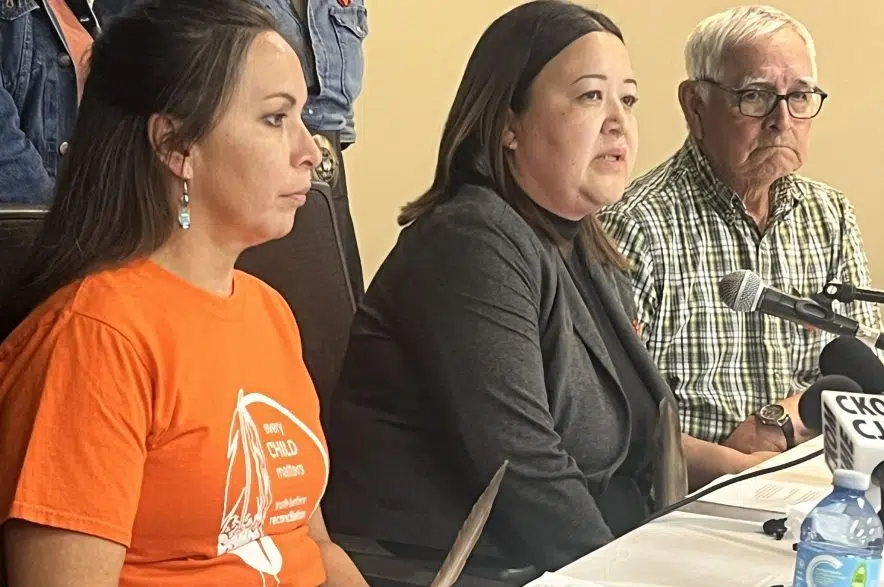The English River First Nation (ERFN) has announced the discovery of 93 unmarked graves at the site of the former Beauval Indian Residential School.
The search began in August 2021 with the help of archaeologists and geoscience experts, along with volunteers from the First Nation.
During a news conference Tuesday, ERFN Vice Chief Jenny Wolverine said at first, they weren’t sure what they would find.
“We did know the stories that were shared over the generations about the treatment of these students, and those student who never returned home,” she said.
“From those stories, we had an idea of where to look … What we found was heartbreaking and devastating. To date, there are 93 unmarked graves — 79 children and 14 infants.”
According to a news release on Aug. 8, ground-penetrating radar produced several positive hits at the former site of the school. The initial findings of the Areas of Interest (AOI’s) were consistent with what were believed to be 83 possible unmarked graves.
Since then, another 10 graves have been added to the total.
“The additional number was confirmed by the archaeologists when we placed the flags the day after the news announcement,” Wolverine said. “Let me be clear: This is not a finality. This is not a final number.”
Search co-ordinator Dawn McIntyre explained that 3D images of the soil were found in the shape and size of graves, which were compared with known, marked gravesites already on the school property.
“These unmarked graves are very consistent with the marked graves. They look exactly the same. The measurements were identified as child-size or … sub-adult. So, less than five feet (in length),” she said.
Possible infant graves were also identified as less than 2.5 feet in length.
Wolverine and McIntyre both called on the provincial and federal governments to provide resources for continued search efforts and for memorials and healing centres to be built on First Nations where former residential school gravesites have been identified.
“We need to pool our resources, First Nations and Métis, to continue,” a news release said. “We need Canada and Saskatchewan to step up, acknowledge and provide meaningful resources that meet the physical, emotional, mental and spiritual needs of survivors and addresses the intergenerational impacts to families.”
The National Centre for Truth and Reconciliation says the St. Bruno’s boarding school was opened by Roman Catholic missionaries in 1860 at Ile-a-la-Crosse.
“In 1906 the school was moved to the confluence of the La Plonge and Beaver Rivers,” the NCTR said. “In 1927, 19 students and one teacher died in a fire that destroyed the school and the dormitories.
“In 1969 the federal government took over the administration of the school. In 1985 full control of the school and residence was transferred to the Meadow Lake Tribal Council. The residence closed in 1995.”
The chief and council of the English River First Nation were joined at Tuesday’s announcement by Elders and by representatives of the Meadow Lake Tribal Council, Federation of Sovereign Indigenous Nations, Métis Nation–Saskatchewan and the Office of the Treaty Commissioner.
Together, they called for action by Canadians and governments to address the injustices suffered by residential school survivors. To that end, they called on groups to implement the Calls to Action, including:
- Installing culturally appropriate memorials in communities;
- Erecting a meaningful and respectful monument to acknowledge all residential schools;
- Creating healing centres to address the continued harms of residential school;
- Providing complete records that list all students who attended residential schools; and
- Embarking on a national educational journey that properly reflects the effects residential schools have had on First Nations and Métis families.
The findings at the former site of the Beauval residential school follow discoveries on other First Nations in Saskatchewan, including the Cowessess First Nation and the Keeseekoose First Nation.
— With files from 650 CKOM’s Lara Fominoff







